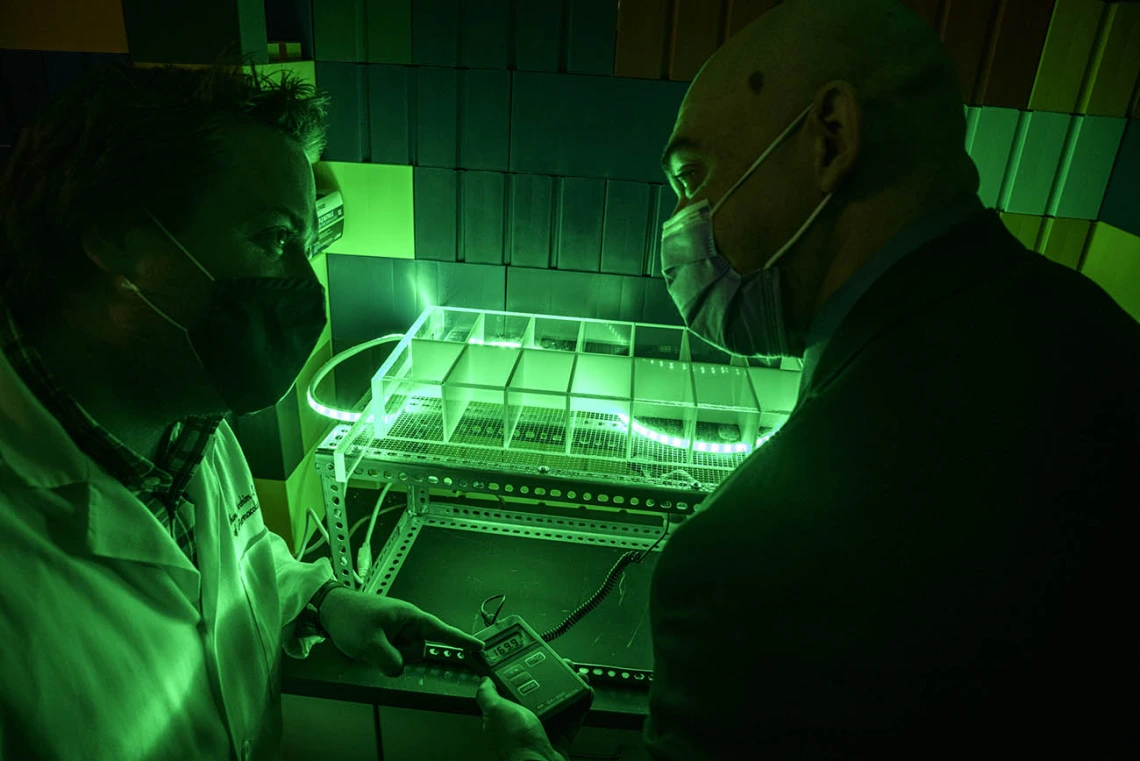US Army Medical Research grant funds study of green light therapy for postsurgical pain
University of Arizona Health Sciences researchers will continue their study of green light therapy, a promising non-opioid pain relief option.

University of Arizona Health Sciences researchers are studying green light therapy with a goal to reduce opioid dependency in postsurgical patients.
University of Arizona Health Sciences Comprehensive Pain and Addiction Center researchers will use a $2.4 million grant from the United States Army Medical Research Acquisition Activity to determine the effectiveness of green light therapy on postsurgical pain and inflammation.
The number of surgeries in the United States exceeded 40 million in 2010 and has steadily increased since then. At the same time, the opioid crisis continues to have devastating effects throughout the country. Despite the risks associated with opioids, they remain the most prescribed medications for managing surgical pain.
“Patients with anxiety, depression or sleep disturbances can experience exaggerated pain, necessitating higher doses of opioids to control their postsurgical pain. Military members and veterans have anxiety, depression and sleep disturbance at rates three to four times greater than civilians. Sadly, they are also at higher risk of opioid use disorder and dependence,” said pain management physician Mohab Ibrahim, MD, PhD, associate director of medical affairs for the Comprehensive Pain and Addiction Center and professor of anesthesiology in the UArizona College of Medicine – Tucson. “Finding a therapy that can decrease reliance on opioids for postsurgical pain would be transformative.”
Previously, clinical trials conducted by Ibrahim and Laurent Martin, PhD, assistant professor of anesthesiology in the UArizona College of Medicine – Tucson and member of the Comprehensive Pain and Addiction Center, found that green light therapy decreased chronic pain, anxiety, and depression and improved sleep in people with migraine and fibromyalgia.
Additional prior research found that green light can promote the brain’s natural ability to reduce inflammation and pain. Pre-clinical studies of chronic and postsurgical pain showed that green light acts through a pain center in the brainstem known as the rostral ventromedial medulla, or RVM.
“We have already shown that green light can decrease pain and anxiety in animal models by increasing the production of natural substances in the brain that fights pain and anxiety while also reducing the production of inflammatory substances,” Martin said. “In this study, we will examine whether green light therapy can reverse surgically induced pain by increasing the production of the brain’s natural chemicals that fight pain, preventing the immune cells from being activated and decreasing the inflammatory environment in the RVM.”
Martin, Ibrahim and the research team will specifically look at two things: the role the RVM plays in bringing about the pain-relieving effects of green light therapy; and changes in the levels of natural chemicals that decrease pain after exposure to green light.
Their long-term goals include decreasing the need for opioids and lessening the impact of the opioid pandemic, decreasing hospital stay and comorbidities associated with uncontrolled pain, and fast-tracking green light therapy to clinical practice.
“Nonpharmacological therapies to manage pain are gaining more attention. While some nonpharmacological therapies are commonly used, many others remain underutilized. For example, light therapy has been used medically for depression and seasonal affective disorder; however, its utility for pain control is only newly being investigated,” said Ibrahim, who gave a lecture on recent advances in phototherapy for pain last fall at the Health Sciences Innovation Building in Tucson. “We hope to learn more about how green light affects the pain center of the brain, bringing us one step closer to taking this translational research to clinicians for the ultimate benefit of patients everywhere.”
This study is funded by the United States Army Medical Research Acquisition Activity under award no. HT94252310174.
Contact
Stacy Pigott
UArizona Health Sciences
520-539-4152
spigott@arizona.edu

